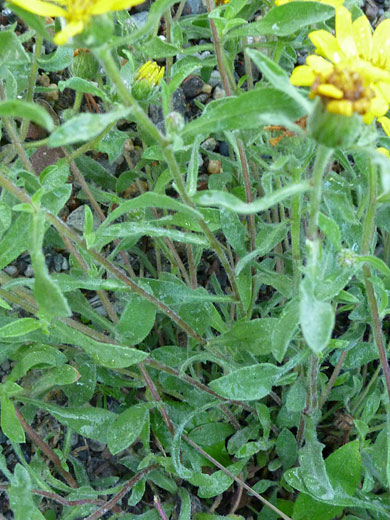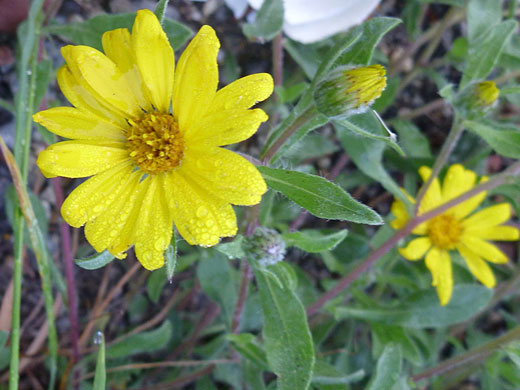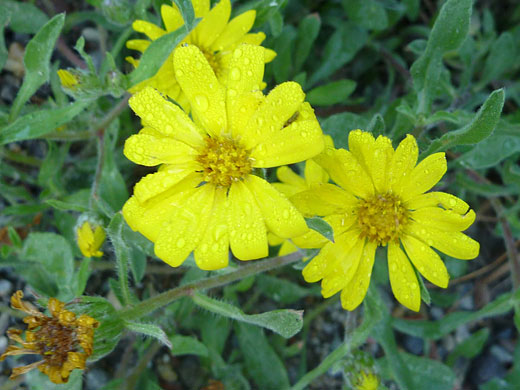Common names:
Alpine goldenaster, dwarf golden aster
Family:
Scientific name:
Heterotheca pumila
Main flower color:
Range:
Far south Wyoming, Colorado and southeast Utah
Height:
Up to 12 inches
Habitat:
Open, rocky locations in the alpine and subalpine zones
Leaves:
Oblanceolate, around 2 inches long, with short hairs on the surfaces and longer hairs on the edges
Season:
July to September
Heterotheca pumila is a low growing plant inhabiting rocky, high elevation locations, often colonising large areas and producing many dozens of reddish-green stems, which point upright, at an angle or sideways. Flower heads are borne singly or in groups of up to 9. They have from 10 to 23 yellow ray florets, between 24 and 60 darker yellow disc florets and 4 to 5 rows of phyllaries, which are dark green around the base, lighter green higher up and reddish-purple at the (pointed) tip. Leaves and stems are quite hairy, and together form quite a dense ground covering. The uppermost leaves grow just below the flower, often poking up between the petals.
All Contents © Copyright The American Southwest | Comments and Questions | Contribute | Site Map




